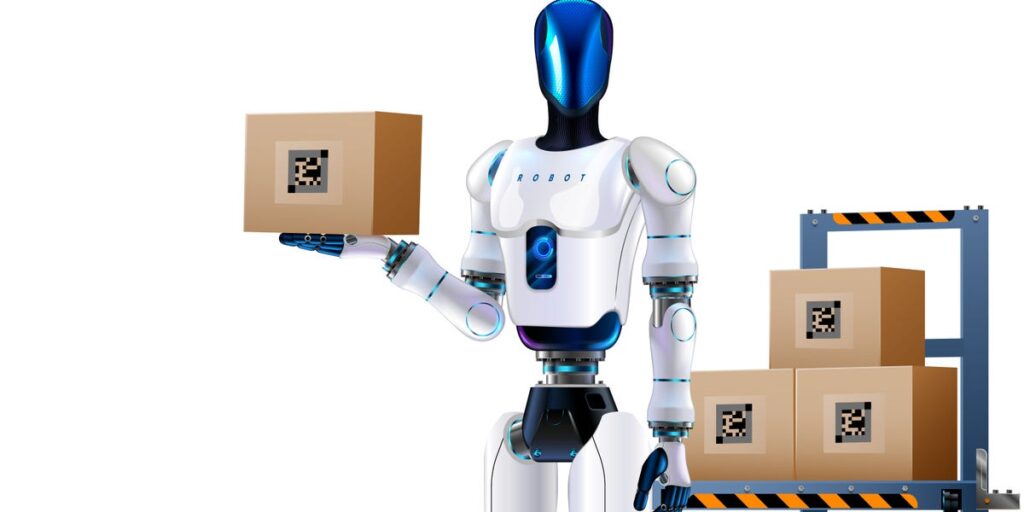“The home is coming,” Brett Adcock, the founder of robotics company Figure AI, says.
“The home is like single-digit years away” from being a place where humanoid robots can do “useful work,” he said this week on Around the Prompt, a tech podcast.
That is, first and foremost, thanks to advances in hardware, which have become significantly more reliable in the past decade. “You can’t get this done on like mediocre hardware,” Adcock said.
Neural networks, the computational models that mimic the networks in the brain, meanwhile, have evolved to make humanoids a near-term reality, he said.
Adcock referenced an update the company released last week for its humanoid robot, Helix, allowing it to complete an hour of “uninterrupted logistics work.” The robot managed packages on a conveyor belt.
Adcock said the latest development shows that its neural nets are “approaching human speed and performance.”
Investors, too, see promise in a future populated by humanoid robots.
Figure, founded in 2022, has raised $2.34 billion, with $1.5 billion coming from its latest Series C round in February led by SaxeCap, 1802 Ventures, and Vegvisir Capital. The company is now valued at $2.6 billion, according to PitchBook.
The company has also raised money from companies like Microsoft, OpenAI, Nvidia, and Amazon founder Jeff Bezos. But Adcock — who previously founded electric aircraft company Archer and AI talent marketplace Vettery — said he put in a bulk of the initial capital.
In the last seven years, the “climate towards deep tech has really flipped,” Adcock said. “There are fully dedicated funds for this. People realize now that probably some of these deep tech companies might be the biggest businesses in the world or starting to become the biggest business.”
Other major players in the humanoid robot space include Tesla, which has Optimus, a 5-foot-8 humanoid robot that can dance, clean, and take out the trash. The company is working to deploy its first fleet in its factories by the year’s end. Boston Dynamics has Atlas, which can run, crawl, break dance, and do cartwheels. Agility Robotics has Digit, which Amazon once tested in its warehouses, though the e-commerce giant now uses its own set of in-house, non-humanoid robots designed by Amazon Robotics.
Many of these humanoid machines move with fluidity, exhibiting a suite of motor skills that allow them to augment the human labor force. Figure says its mission is to “develop general-purpose humanoids that make a positive impact on humanity and create a better life for future generations,” especially ones that can “eliminate the need for unsafe and undesirable jobs — ultimately allowing us to live happier, more purposeful lives.”
The company already has robots mingling with humans at its offices, asking employees if they want water or coffee, or simply patrolling the premises, he said. So, it’s not hard to imagine a time when “you’ll see as many humanoid robots as you see humans,” he said. “It’s literally going to feel like a sci-fi movie.”
The real draw, though, is that “the humanoid robots will be the ultimate deployment vector for AGI,” he said.
Humanoids aren’t the only type of robots in development. In 2024, investors put $6.1 billion in VC dollars behind the general category of robotics, up 19% from 2023, according to PitchBook. That includes companies collecting data, building AI models for robots, and creating robotic fleet management software, PitchBook said. “There’s a whole ecosystem that’s been kickstarted in the last three years,” Srini Ananth, managing director at Intel Capital, told PitchBook.
Some experts in the field question whether the human form is really the best vehicle for machines.
“My hypothesis is that the requirements of different tasks are so vast that having very few form or sticking with one form is energy inefficient,” Fei-Fei Li, cofounder and CEO of World Labs, said on the No Priors podcast.
“Just an extreme and trivial example, if we put robots underwater, they should not be the shape of humans. They better be in the shape of fish. Just think about energy efficiency. The same with flying.”
Read the full article here


